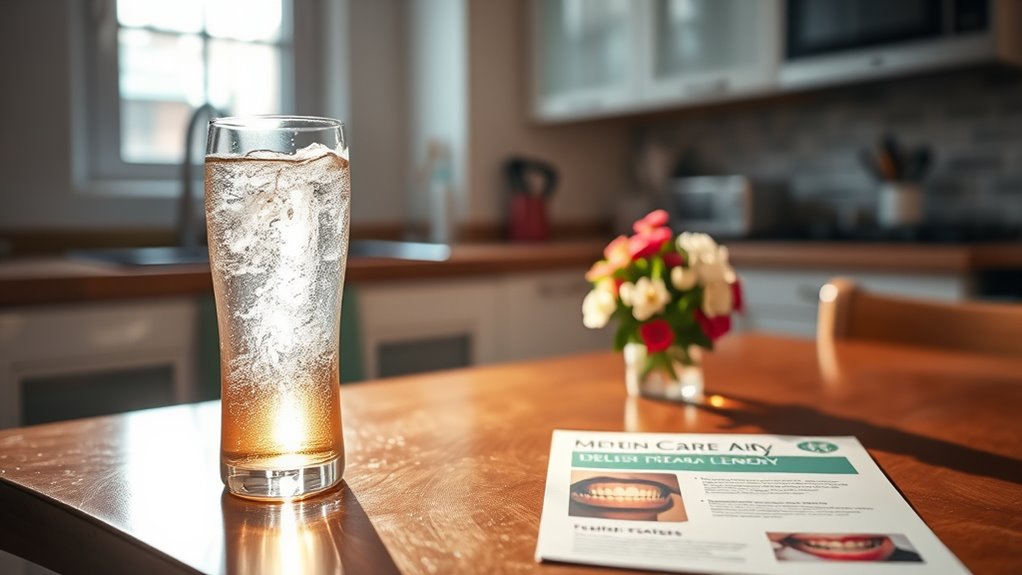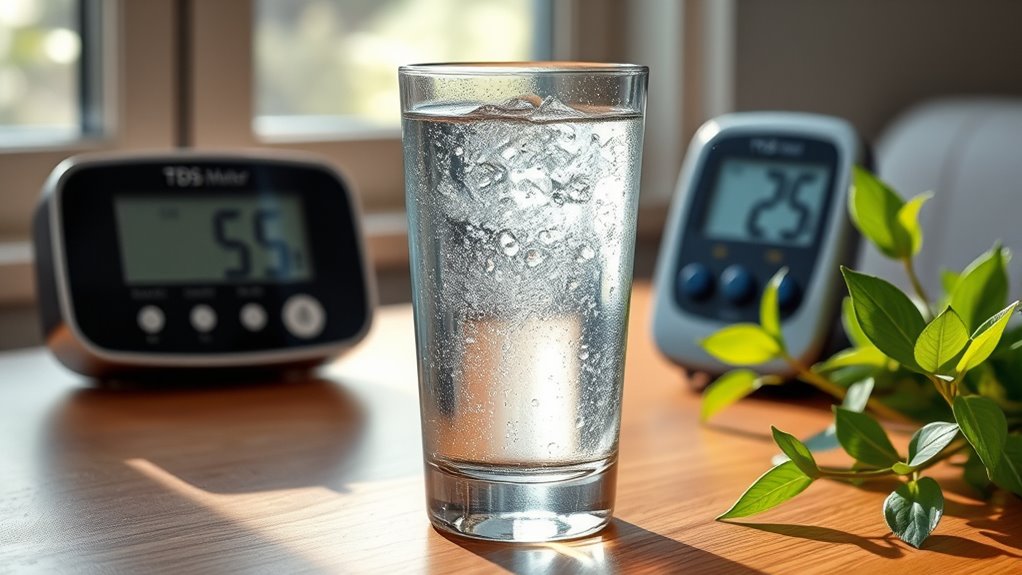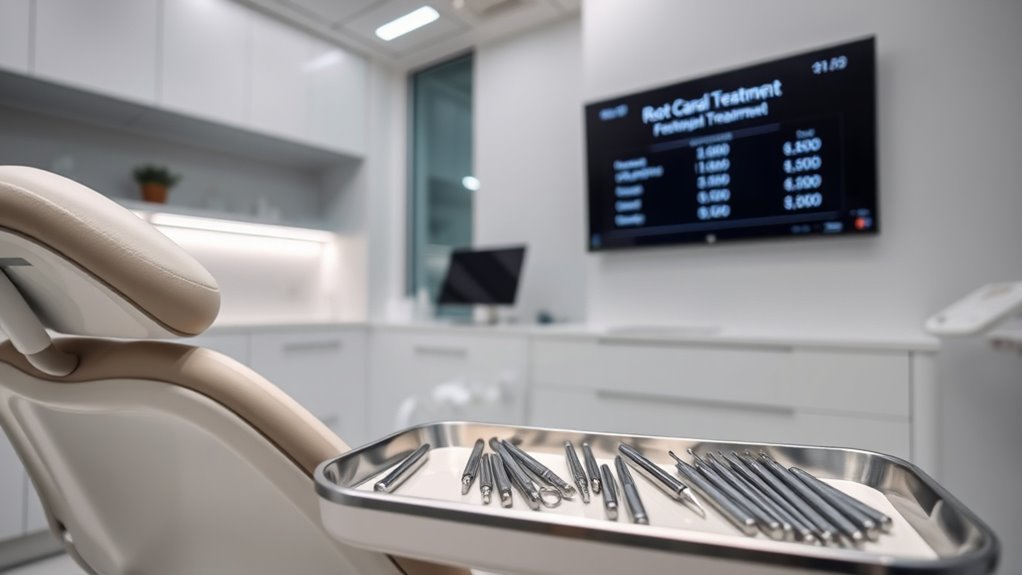
After a tooth extraction, you might be wondering when it’s safe to enjoy soda again. It’s important to take into account the impact of carbonation and acidity on your healing gums. Waiting too soon could lead to complications. So, how long should you really wait before reintroducing that fizzy drink into your diet? Understanding the timeline and potential risks can help you guarantee a smooth recovery. Let’s explore what you need to know.
Key Takeaways
- Avoid drinking soda for at least 48 to 72 hours after tooth extraction to prevent irritation and complications.
- Soda’s acidity and carbonation can dislodge blood clots, risking dry socket, a painful condition.
- Sugars in soda may increase the risk of infection, so it’s best to avoid it during recovery.
- Focus on hydration with water, herbal tea, or alternative beverages before reintroducing soda slowly.
- Consult your dentist for personalized advice on when to safely resume drinking soda based on your recovery progress.
Understanding Tooth Extraction Recovery
When you undergo a tooth extraction, understanding the recovery process is vital for a smooth healing experience. The recovery timeline typically begins immediately after the procedure. You might experience swelling and discomfort for the first few days, so managing pain with prescribed medications is essential. Over the next week, you’ll notice gradual improvement as the site starts to heal. It’s important to stick to soft foods and avoid strenuous activities during this time. By the end of the first week, many people feel considerably better, though complete healing can take a few weeks. Following your dentist’s aftercare instructions closely will help guarantee you recover without complications. Remember, everyone’s timeline may differ, so listen to your body as you heal.
Immediate Post-Extraction Care
After your tooth extraction, it’s crucial to follow specific care guidelines to promote healing and prevent complications. Start by managing any pain with prescribed medication or over-the-counter pain relievers, as needed. Applying an ice pack on your cheek can also help reduce swelling.
Keep your mouth clean by practicing gentle oral hygiene. Avoid rinsing your mouth vigorously or using a toothbrush on the extraction site for the first 24 hours. Instead, rinse with warm salt water after the first day to help keep the area clean.
Stay hydrated, but refrain from using straws, as the suction can dislodge the blood clot. By following these steps, you’ll support a smoother recovery process.
The Risks of Drinking Soda Too Soon
Drinking soda too soon after a tooth extraction can lead to complications that may hinder your healing. The high acidity of soda can irritate the extraction site, causing inflammation and delaying the healing process. Carbonation can also create pressure in your mouth, which might dislodge the blood clot essential for proper recovery. If this clot dislodges, you could experience dry socket, a painful condition that requires further treatment. Furthermore, the sugars in soda can contribute to infection, complicating your recovery even more. To guarantee a smooth healing process, it’s best to avoid soda until you’re fully healed. Prioritizing your recovery will help you return to your normal diet sooner and with less discomfort.
Recommended Timeline for Reintroducing Soda
While your body heals from a tooth extraction, it’s essential to wait before reintroducing soda into your diet. Generally, you should hold off on drinking soda for at least 48 to 72 hours. During this recovery timeline, focus on staying hydrated with water, herbal tea, or soda alternatives like coconut water or flavored seltzers. These options can help keep you refreshed without irritating your healing gums. After the initial days, if you feel comfortable and your recovery is progressing well, you might slowly reintroduce soda. Just remember to monitor how your body reacts and stick to moderation. Listen to your dentist’s advice, and prioritize your oral health during this vital healing period.
Signs of Complications to Watch For
Even though most tooth extractions heal without issues, you should be aware of potential complications that can arise during your recovery. Watch for infection signs like increased swelling, redness, or pus near the extraction site. If you experience a fever or worsening pain that doesn’t subside with over-the-counter medication, seek help immediately. Healing indicators include a gradual reduction in swelling and discomfort. If these signs aren’t present or if you notice a bad taste in your mouth, it could signal a problem. It’s essential to monitor your recovery closely. If anything feels off, don’t hesitate to contact your dentist for guidance. Staying vigilant can help you catch complications early and guarantee a smoother recovery process.
Alternatives to Soda During Recovery
Although soda might be tempting during your recovery, there are several healthier alternatives that can keep you hydrated and help your healing process. Consider sipping on herbal beverages like chamomile or peppermint tea, which can soothe your mouth and provide hydration without the added sugars. If you’re craving something sweet, opt for drinks sweetened with sugar alternatives, such as stevia or monk fruit. These options can satisfy your taste buds while being gentler on your healing gums. Coconut water is another fantastic choice; it’s packed with electrolytes and provides a revitalizing taste. By choosing these alternatives, you’ll support your recovery and avoid the potential setbacks that soda might bring. Stay hydrated and give your body the nutrients it needs!
Tips for Enjoying Soda Safely After Healing
Once you’ve fully healed, you can enjoy soda again, but there are some tips to keep in mind. Opt for clear sodas to minimize any potential irritation, and using a straw can help protect your healing gums. These simple choices can make your soda experience safer and more enjoyable.
Choose Clear Soda
How can you make your post-extraction soda experience enjoyable while still being mindful of your healing? Choosing clear soda is a great option. Clear soda benefits include being less acidic and less likely to irritate your healing gums compared to darker sodas. Plus, they often contain fewer additives, making them gentler on your mouth. When looking for clear soda alternatives, consider options like lemon-lime sodas or ginger ale, which can provide a satisfying fizz without the harshness of darker varieties. Remember to take it easy, sip slowly, and pay attention to how your mouth feels. This way, you can enjoy your favorite beverages while ensuring you stay comfortable during your recovery.
Use a Straw
Using a straw can make your soda experience more enjoyable after tooth extraction, as it helps minimize contact between the fizzy drink and your healing gums. By opting for straw usage, you reduce the risk of irritating your sockets and promote a smoother recovery. Just remember to sip gently; excessive suction can dislodge blood clots, which are essential for healing.
If you don’t have a straw handy, consider straw alternatives like sipping from a cup with a wide rim, which allows you to control the flow. Always choose a clean, soft straw to avoid any irritation. Enjoy your soda cautiously, and make sure to follow your dentist’s recommendations for a safe recovery.
Consulting Your Dentist for Personalized Advice
When it comes to drinking soda after a tooth extraction, getting professional guidance is essential. Your recovery is unique, and your dentist can provide tailored advice based on your specific situation. Don’t hesitate to reach out to them for recommendations that suit your healing process.
Importance of Professional Guidance
Although it’s tempting to rely on general guidelines about what to eat or drink after a tooth extraction, consulting your dentist is essential for tailored advice. Your dentist can provide professional recommendations based on your specific situation, ensuring a smoother recovery. Here are three reasons to seek dental advice:
- Personalized Recovery Plans: Your dentist considers factors like the complexity of the extraction and your overall health.
- Timing for Consumption: They’ll inform you when it’s safe to resume drinking soda or other beverages.
- Potential Risks: Your dentist can highlight risks associated with certain foods or drinks that general advice may not cover.
Don’t hesitate to reach out for guidance—your recovery deserves the best care!
Individual Recovery Considerations
While every tooth extraction is unique, your recovery plan should reflect your individual needs and circumstances. Consulting your dentist is vital for personalized advice. They can help you develop individual healing strategies and necessary dietary adjustments to guarantee a smooth recovery.
Here’s a quick guide to help you understand common recovery considerations:
| Recovery Factor | Considerations | Timeframe |
|---|---|---|
| Pain Management | Over-the-counter pain relievers | As needed |
| Dietary Adjustments | Soft foods, avoid hard/sugary foods | First week |
| Activity Level | Rest, avoid strenuous activity | 2-3 days |
| Follow-up Care | Schedule check-ups | As recommended |
Maintaining Oral Health After Tooth Extraction
To maintain your oral health after a tooth extraction, it’s essential to follow specific care guidelines to promote healing and prevent complications. Here are three key steps you should take:
- Prioritize Oral Hygiene: Gently rinse your mouth with warm salt water after 24 hours to keep the extraction site clean. Avoid brushing the area directly for a few days.
- Make Smart Dietary Choices: Stick to soft foods like yogurt, applesauce, and smoothies. Avoid hot, spicy, or crunchy foods that might irritate the extraction site.
- Stay Hydrated: Drink plenty of water but steer clear of sodas and alcohol for at least 48 hours to support healing and reduce swelling.




